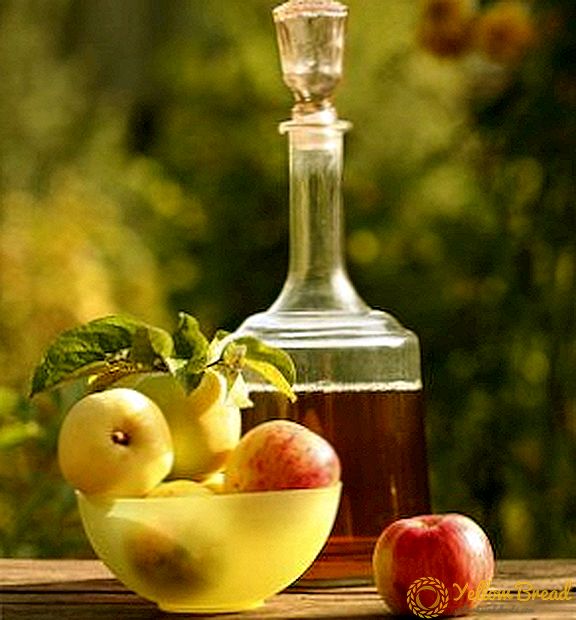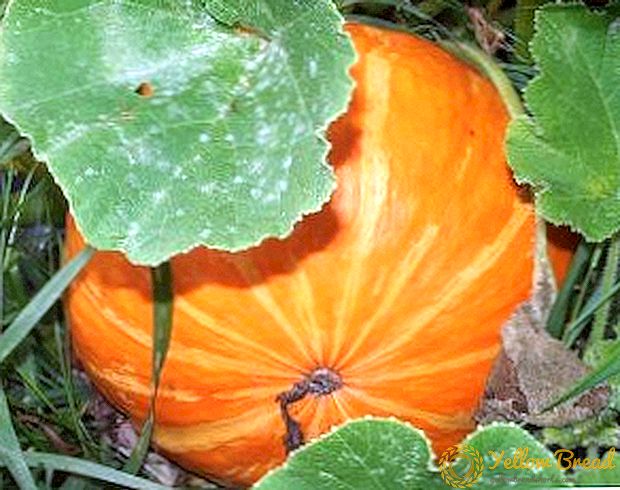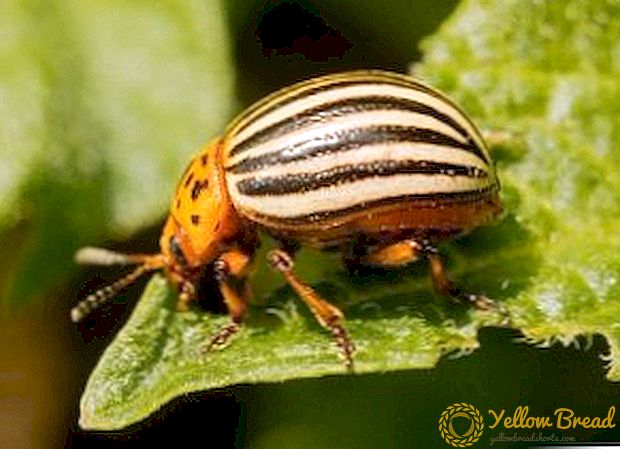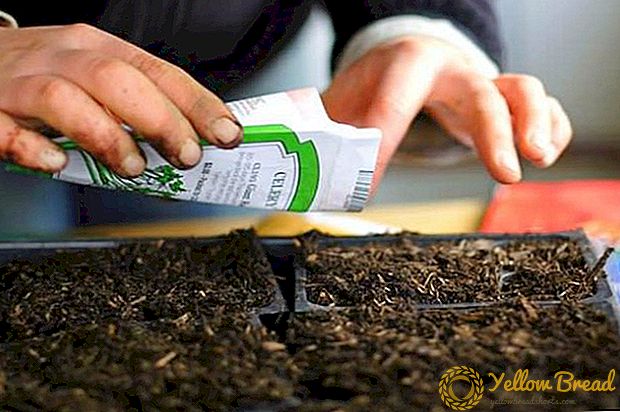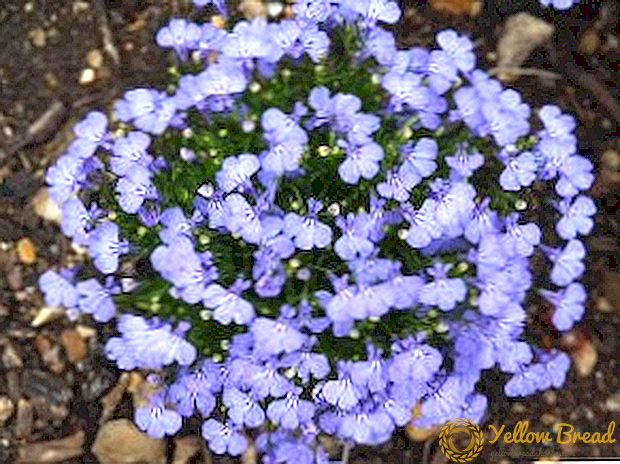 In many European countries, the words "cherry" and "sweet cherry" are translated in the same way. And there is nothing strange in this, because they are related to each other. But even such connections between cultures are not able to transform sour cherries into sweet cherries.
In many European countries, the words "cherry" and "sweet cherry" are translated in the same way. And there is nothing strange in this, because they are related to each other. But even such connections between cultures are not able to transform sour cherries into sweet cherries.
Cherries can not be seen at all gardeners in their areas. Over the years, breeders have developed many different varieties of sweet cherries for cultivation in the Moscow region and other regions of Russia.
We will tell about some of them later, and also we will specify terms of landing and features of each grade.
- Description of the best varieties of sweet cherries: their ripening, fruits, advantages and disadvantages of each of them
- Bryansk pink cherry, what is it?
- Iput Cherry variety, its main characteristics, data on positive and negative qualities
- The main aspects of sweet cherry "Fatezh"
- Unusual variety of cherry "Tyutchevka" what are its features, advantages and disadvantages of this culture
- And the last variety, which we describe in this article, is called "Revna"
- Landing Moscow region cherries: reveal all the secrets
- Features care for cherries growing in the Moscow region: discussing watering, pruning and fertilizer,and how to prevent diseases and pests
Description of the best varieties of sweet cherries: their ripening, fruits, advantages and disadvantages of each of them
Fertile soil and plenty of sunshine and heat are needed to grow cherry trees. But cold areas of Moscow are not suitable for it, and therefore scientists have developed new, cold-resistant varieties. The most famous include: Bryansk Rose, Iput, Fatezh, Tyutchevka, Revna.
Bryansk pink cherry, what is it?

Fruits of Bryansk pink cherries are medium in size from 4 to 6 grams. They are round in shape, measuring about 20-22 mm in diameter. The color of the berries is pinkish, and the flesh is yellowish. Inside there is a brown stone, weighing 7-8% of the total mass of cherries. The size and thickness of the stem is average. The taste of sweet fruit and juicy.
This variety late ripening. Fruiting occurs in the 4-5 year of the tree. It is a self-sterile crop, which requires additional pollinators. Flowering tree occurs in the first decade of May. Fruit ripening occurs in mid-July. The average yield reaches about 78 c / ha, but sometimes more.
The tree is not tall, about 2-2.6 m, with an average density of branches. Has kidney ovoid or oval. The leaves of the tree are green and large.In the inflorescence there are 3 small flowers, the pistil and the stigma are located on the same level, the cup is in the shape of a glass, the sepals have no serrations. The length of the stamens and pistils is high.
Fruiting falls on the bouquet twigs. Shoots from brown cherry with a gray bloom.
This variety of sweet cherry has one minus: inability to self-pollination. But this is not so scary, because there are other trees that can pollinate a tree, these include such varieties as "Iput", "Tyutchevka", "Revna". To the main good performance relate:
- High tolerability of winter cold.
- Sweet cherry is resistant to fungal diseases inherent in this variety.
- Rot weakly affect the berries of the tree.
- It tolerates transportation over long distances.
- Berries do not crack when rainy and wet weather.
Iput Cherry variety, its main characteristics, data on positive and negative qualities

The fruits of a tree weigh an average of 5.2-5.5 grams. The shape of the berries is round, dimensions: width, height, thickness is about 20-22 mm. Cherry burgundy color, and at full maturity almost black.
It has a thick and short stalk.There is a bone up to 0.3 grams of weight, light brown, also well separated from the pulp. The fruits are very beautiful in appearance, juicy and sweet, the stem from which it comes off very well.
This sweet cherry refers to early varieties of maturation. Fruiting begins already at 4-5 year. Like the previous variety, it is self-productive, therefore additional pollinator varieties are needed. Flowering occurs very early. The process of final maturation occurs in mid-June. The yield of trees is 80 c / ha, and in some years it reaches 145 c / ha.
The culture is quite tall in height of about 3.5-4 meters. The crown of the tree is quite dense and many-leaved, and has the shape of a pyramid. Buds oval, large. Sheets are more elongated and dark green in color, and there is also a double serration.
Flowers in the inflorescence 3 is also 4, white. Stamens and pistils are equally located on the same level. Sepals have no serrations. The length of pistils and stamens is equally high. On the bouquet branches comes fruiting.
By the minus of this class, as well as the previous one, it refers inability to self-pollinationthat requires additional pollinator trees.
Benefits This variety are:
- It tolerates winter and spring frosts.
- Positive quality is a good resistance to fungal diseases.
- Every year gives a good and moderate harvest.
- The buds of this type of tree also tolerate very cold weather.
- This variety of sweet cherry belongs to the early term of ripening.
- A plus is the fact that the pulp of the berries is dense.
- It has good transportability.
The main aspects of sweet cherry "Fatezh"

The height of the trees reaches a maximum of 3-4 meters. Has a sparse crown of a tree in the shape of a ball, branches spread out. The leaves are mostly large, pointed, green or dark green, a little shine. Buds are no different from other varieties of species. The flowers in the inflorescence are many, which are white.
This variety of sweet cherry is medium-term for the maturity of fruits. You can try the first berries in the fifth year of the tree’s life. It cannot pollinate itself, therefore additional varieties of pollinators are required, which bloom at the same time as the cherry. For better pollination, you can use honey solution.
The flowering period of the tree falls in the middle or beginning of the month of May. The final maturation occurs in the month of July. The yield from one tree is 50 kg per year, which is very small.
Berries are medium in size, weighing 4-5 grams. One-dimensional, rounded cherries have a reddish-yellowish color. The flesh is very juicy, separates from the stone quite well. Fruits from the stem come off well. Stone is 5-6% of the total weight of the berry. The taste is dominated by sweet and sour notes.
What is related to disadvantages this sweet cherry:
- There is no ability to self-pollination; for this, other cultures are flowering at the same time as the cherry tree.
- Poor windy weather.
- This type of cherry very poorly tolerates the presence of weeds, so you need to constantly clean the top layer of soil.
TO positive factors of this tree include the following features:
- High frost resistance.
- This sweet cherry is a high-yielding variety.
- Does not require frequent watering.
- This variety is resistant to such diseases of the fungus as: moniliosis and coccomycosis.
- Cherry has a good presentation.
- This tree is a beautiful decoration of your garden.
- The ripeness of the berries is also a good quality.
Unusual variety of cherry "Tyutchevka" what are its features, advantages and disadvantages of this culture

This tree has a rare round crown. The buds are small, medium in size, in the form of a cone. The leaves, pointed to the top and the semi-oval bottom, are green, not rough on the surface. Petioles are thick and short, on which there are pigmented glands. The height of the tree is average, one might say ordinary.
When blooming, there are 4 flowers in each inflorescence, the rim has the shape of a saucer, the petals touch each other, the anthers are located at the same level, the calyx is in the form of a narrow glass, and the sepal is not pointed. Pistil and stamens of the same length.
The mass of the fruit discussed cherry varies from 5.2 grams to 7.5 grams. The diameter of the berries is 20-23 mm, widely rounded. It is characterized by dark red or burgundy color with small dots. It has a thick medium length fruit leg. Stone, pointed to the top, weighs about 0.31-0.32 grams, light brown in color. From the pulp is separated normally.The flesh is red good density. The berries are very beautiful, sweet and juicy.
Cherry blossoms bloom too late, therefore, the fruits ripen as well. The tree starts bringing the first berries around the fifth year of planting. High yield it is 97 centners per hectare, and in very high-yielding years it reaches 270 centners per hectare. This culture is self-pollinated.
This culture has no distinguished defects, except that berries in wet weather can crack but not always, which very well affects its history and is pleasant to gardeners.
Positive hand cherry "Tyutchevka", we list them in the following sequence:
- Cherry has a good transportability, which allows long-distance transportation.
- Resistant to various diseases that can attack this tree.
- This variety is self-pollinating, which very well affects the yield, but if there are more pollinators, it will not hurt.
- Cherry "Tyutchevka" is a high-yielding variety.
- Berries have a sweet, juicy taste.
- It tolerates winter cold.
And the last variety, which we describe in this article, is called "Revna"

The fruits of this variety are mostly medium in size; there are neither small berries nor large ones weighing up to 5 grams. But there are exceptions weighing up to 8 grams. Wide round shape, with nineteen millimeter height and thickness, and 20 mm wide.
The shape of these berries is characterized by a wide funnel with a round top. The color gamut is burgundy, and in the period of full maturity it is almost black. The pulp of the berry is dark red, very dense. The length of the stem is average. The stone from the pulp separates well, has a light brown color. Fruit sweet cherry "Revna" very juicy and sweet.
This sort of sweet cherry starts its fruiting at 4 or 5 years of tree life. Flowering begins in the second half of May, but the berries ripen late, in late June or early July.
Sweet cherries are self pollinated, but additional pollinators, such as Raditsa, Venyaminova, and Iput, will only have a very good effect on yield. The maximum yield has to be harvested at about 110 c / ha, and on average about 75 c / ha.
Tree grows fast, medium height, the crown is not very lush in the form of a pyramid. All fruits are formed on the bouquet branches of a tree. The leaves are in the shape of an oval, dark green in color, their skin is thick, the length of the petiole is short.The inflorescence is dominated by 4 white flowers, saucer-shaped, which are located freely from each other. Pistils and stamens of the same length. Like the previous varieties, the stigma of the pistil is at such a height as the anthers.
There are no negative qualities that we could talk about.
Positive aspects that I would like to talk about:
- The first thing I would like to mention is the high quality of the fruits, both in appearance and taste buds.
- This variety tolerates long-distance transportation.
- Winter hardiness of this culture is quite high.
- Basically, various diseases of the fungus do not affect this culture.
- Sunburn practically does not affect the tree.
Landing Moscow region cherries: reveal all the secrets

All cherry trees, without exception, love fertile soil and sunlight. Land on which it is not necessary to plant this culture is loam and sandstone, and the place should be calm. It is also necessary that several varieties of cherries or cherries of the same ripening period grow on your summer cottage in order for the trees to pollinate each other.
Landing sweet cherries in the Moscow region must be produced in spring of the year. To prepare the soil for planting, you need to know that the horizontal roots of the tree lie at a depth of 30-80 cm, and vertical at 2 m. Therefore, the best option would be to do the following: make plantation plowing instead of holes at the site.
A third of the excavated pit is filled with soil mixture from soil and fertilizer. Before landing at the bottom of the pit set column. Then, in the center of the pit, they make a small hill, put a seedling on it and attach it to the pole, then bury the pit, leaving 5-6 cm above the surface. At the end of planting, water and mulch the ground.
Features care for cherries growing in the Moscow region: discussing watering, pruning and fertilizer, as well as how to prevent diseases and pests

These types of crops are not very good for weeds, so you need to constantly carry out cleaning activities around the tree.
In order to protect the crop from birds, the crop must be covered with a special garden net.
Trees are rarely exposed to various fungal diseases, but preventive measures are taken to insure: correct pruning, use of sterile pruners, easy digging up of the soil every year, spraying with various protective substances.
Watered these types of trees seldom, basically three times per season.
Planting between cherries of different types of plants protects them from winter frosts. Also every autumn you need to wind the trees with white paper and in the winter to spud snow so that they do not freeze.
For feeding trees use liquid manure, as well as fertilizers for fruit and berry crops. Only at the very trunk of the fertilizer is not made, and next.
Every spring you need to prune trees, remove diseased, dry and broken branches. Also spring and autumn need to whiten the trunks.

